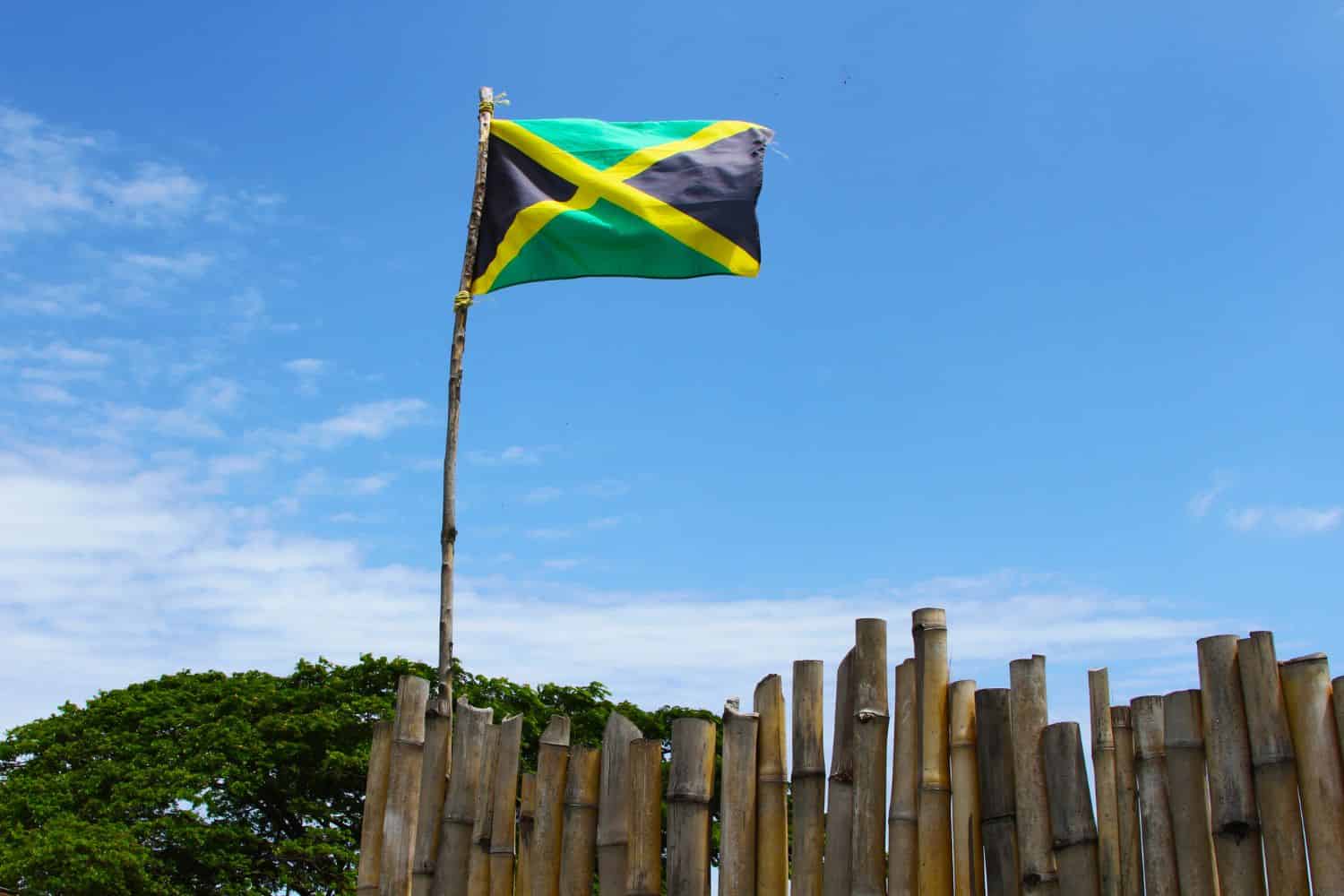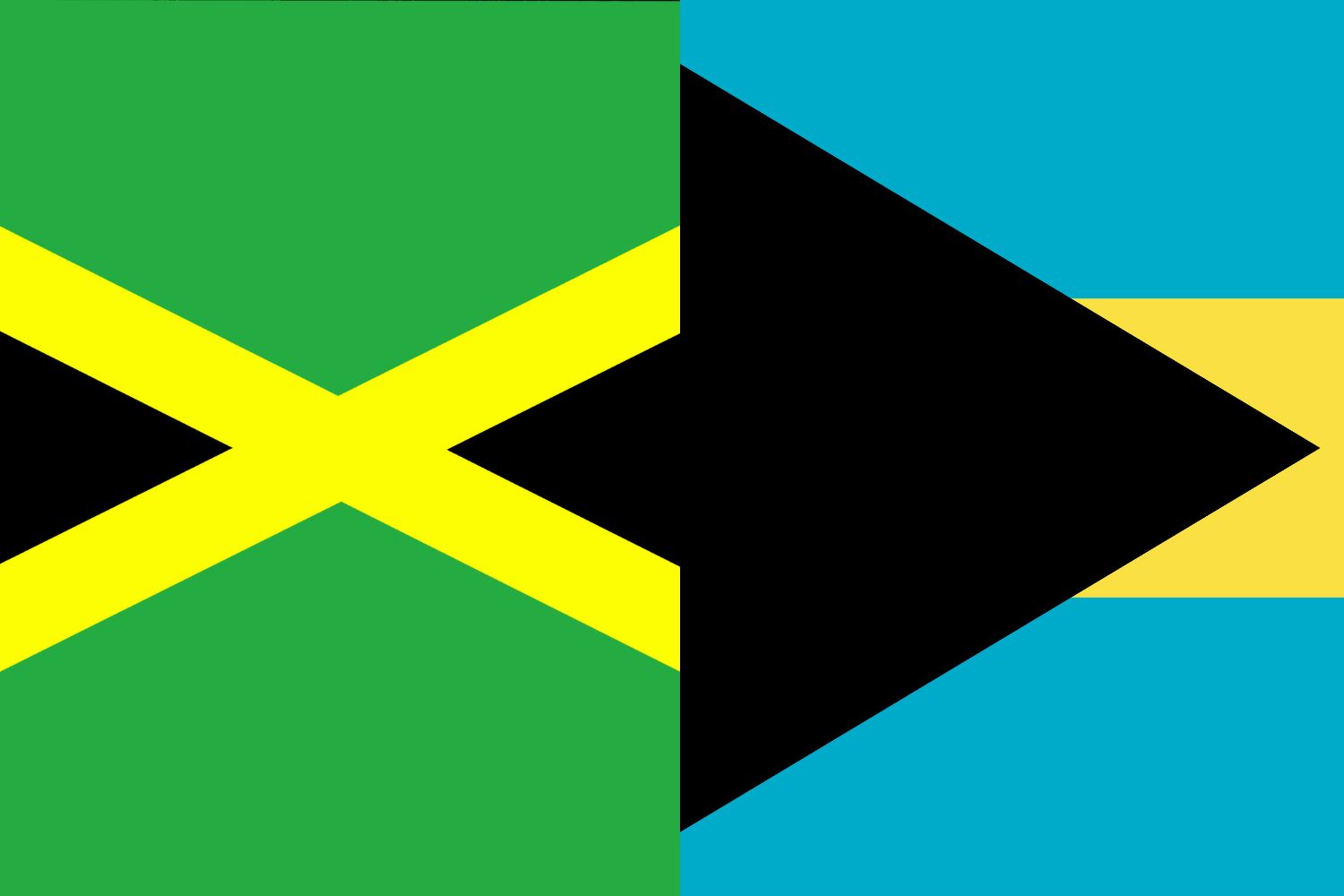Table of Contents
The Jamaican flag, also known simply as the flag of Jamaica, holds profound historical and cultural significance for the country. It symbolizes the identity, resilience, and dreams of the Jamaican people. In this piece, we’ll delve into the captivating facets of the Jamaican flag, including its design, symbolism, and historical context.
The Jamaican flag comprises a diagonal cross with four triangles, two green and two black, radiating from a central yellow cross. The bold colors and dynamic design of the flag reflect Jamaica’s spirit and diversity, encapsulating its rich heritage and vibrant culture.
Jamaican Flag: Colors and Unity
- The flag’s design features a diagonal cross with four triangles.
- The top and bottom triangles are green, while the left and right ones are black.
- In the center, a vibrant yellow cross connects all four triangles.
- The green triangles symbolize the lush vegetation and natural beauty of Jamaica, while the black triangles represent the strength and resilience of its people.
- The yellow cross embodies the golden sunshine that blesses the island nation.
- The flag was officially adopted on August 6, 1962, coinciding with Jamaica’s independence from British colonial rule.
- The symbolism of the flag underscores Jamaica’s commitment to unity, strength, and prosperity, reflecting the nation’s journey towards independence and its unwavering dedication to its values.
Flag of Jamaica

The flag of Jamaica is a powerful symbol that encapsulates the essence of the nation’s culture and spirit. Its design features a green backdrop with two horizontal bands of black and gold, positioned at the top and bottom, respectively. The green color symbolizes the lush vegetation and natural beauty of Jamaica, reflecting the island’s vibrant landscape. The black and gold bands represent the strength and resilience of the Jamaican people, as well as their rich cultural heritage and resources.
The history of the Jamaican flag is deeply intertwined with the country’s journey to independence. Officially adopted on August 6, 1962, the flag embodies the unity and aspirations of the Jamaican people.
Beyond its physical appearance, the Jamaican flag carries profound symbolic significance. The colors and design elements mirror the values and dreams of the Jamaican population, depicting prosperity, strength, and unity. The black, green, and gold colors symbolize the struggles and triumphs of Jamaica’s past, present, and future, while the design itself serves as a testament to the nation’s resilience and unity.
National Flag Etiquette and Protocol

Maintaining the proper use and display of the Jamaican flag holds significant importance. Understanding the etiquette involved in handling the flag, particularly during national ceremonies and events, is crucial. It’s essential to acquaint oneself with the regulations governing the handling, hoisting, and lowering of the flag. Furthermore, knowing the correct procedures for retiring or managing damaged flags ensures they receive the respect they deserve.
- Proper Handling: The Jamaican flag should be handled with care and respect, ensuring it never touches the ground or floor. It should always be held upright and never dragged along any surface.
- Hoisting and Lowering: The flag should be hoisted briskly and lowered ceremoniously. Typically, it is raised at sunrise and lowered at sunset, though adjustments may be made based on specific guidelines or the occasion.
- Displaying the Flag: When displaying the flag, ensure the black triangle is at the top with the green and gold stripes positioned centrally. It’s important to let it fly freely, without any entanglement or obstruction.
- Half-Staff: On designated days of remembrance, national tragedies, or the passing of significant figures, the flag should be flown at half-staff as a mark of respect, following directives from relevant authorities.
- Flag Retirement: When the Jamaican flag becomes damaged or worn out, it should be retired with grace and respect. This might involve burning it in a solemn and respectful ceremony, adhering to proper guidelines and local regulations.
- Flag Size and Placement: The size of the flag displayed should be proportional to the flagpole or display area. It’s advisable to adhere to the guidance of local authorities or guidelines for specifics regarding flag size and placement.
- Respectful Disposal: In cases where burning isn’t feasible for flag retirement, the flag should be disposed of respectfully, either by burying it or entrusting it to authorized organizations specializing in flag disposal.
Interesting Facts and Trivia

Embark on an intriguing exploration of lesser-known facts and trivia about the Jamaican flag. Uncover the symbolic elements woven into its design, reflecting the island nation’s rich heritage and cultural significance. Discover captivating stories of pivotal moments or events tied to the flag, shaping Jamaica’s historical narrative and national identity.
Rich Tapestry of History
- 1962: Jamaica adopts its current flag on August 6, encapsulating the unity and aspirations of its people.
- Colors and Symbolism: The black, green, and gold colors of the flag hold deep significance. Green symbolizes the island’s lush vegetation and hope for the future, while black represents the struggles of the Jamaican people and their strength. Gold signifies the country’s wealth and bright prospects.
- Cross and Triangles: The flag’s bold design features a diagonal cross with four triangles, each representing the resilience and diversity of Jamaica’s people, as well as the island’s sunshine and natural resources.
- National Identity: The flag serves as a powerful emblem of Jamaica’s storied past, vibrant culture, and ongoing journey toward unity, prosperity, and growth.
These historical nuggets shed light on pivotal moments in the evolution of the Jamaican flag, underscoring its central role in shaping the nation’s identity and embodying its collective aspirations over time.
Flag-Related Symbols and Emblems
Just as a flag is not the sole bearer of a nation’s identity, delve into additional symbols and emblems closely tied to Jamaica. Explore their historical and cultural roots, gaining deeper insight into the island’s rich heritage and traditions. From the majestic Blue Mountains to the rhythmic beats of reggae music, each symbol adds another layer to Jamaica’s vibrant tapestry of identity. Plan your Jamaican journey today and immerse yourself in the essence of this dynamic Caribbean nation.
Symbolisms of the Jamaican Flag
The flag of Jamaica holds several symbolic elements that represent the nation’s history, values, and aspirations. Here are the symbolisms of the Jamaican flag presented in itemized form:
- Green Color: Represents the lush landscapes and natural beauty of Jamaica, as well as its fertile land and agricultural heritage.
- Black Triangle: This element symbolizes the strength and resilience of the Jamaican people, reflecting their struggles and triumphs throughout history.
- Yellow Saltire (X shape): Represents the sunshine that bathes the island nation, signifying Jamaica’s bright future and optimism.
- Flag’s Design: Reflects Jamaica’s aspirations, cultural heritage, and unity among its diverse population.
- National Identity: The flag serves as a powerful symbol that unifies the Jamaican people, reminding them of their shared heritage and cultural identity.
- National Aspirations: Through its design and elements, the flag embodies the aspirations and values of the Jamaican nation, including resilience, unity, progress, and tradition.
These symbolisms in the flag contribute to the country’s sense of identity and pride, reflecting its historical journey and cultural significance.
Flags of Similar Countries or Regions
Examining the flags of neighboring countries or regions to Jamaica can unveil captivating insights. Delve into a thorough comparison of these flags, discerning the similarities and differences in their designs, colors, or symbolism. Uncover the historical and cultural ties between these flags, illuminating shared influences or distinctive identities.
Jamaican Flag vs Cuban Flag

Similarity: Both flags prominently showcase the color blue.
Difference: The Cuban flag features three blue stripes and two white stripes, with a red equilateral triangle on the hoist side.
Jamaican Flag vs Haitian Flag

Similarity: Both flags incorporate the colors black and yellow/gold.
Difference: The Haitian flag features two horizontal blue stripes, one on top and one on bottom, with a central white stripe adorned with the Haitian coat of arms.
Jamaican Flag vs Dominican Flag

Similarity: Both flags incorporate the color red.
Difference: The Dominican flag consists of a central white cross that extends to the edges, dividing the flag into four rectangles; the top and bottom rectangles are blue, while the left and right rectangles are red.
Jamaican Flag vs Bahamian Flag

Similarity: Both flags prominently feature the color yellow/gold.
Difference: The Bahamian flag consists of three horizontal aquamarine stripes of equal width, with two white stripes separating them; a black equilateral triangle is positioned on the hoist side.
Frequently Asked Questions (FAQs)
Explore answers to common questions regarding the Jamaica flag picture. From its historical background to the significance of its elements, find succinct and informative explanations that address queries frequently raised by those intrigued by Jamaica’s flag.
What do the colors of the Jamaican flag represent?
The black on the flag symbolizes the strength and creativity of the Jamaican people, the gold/yellow represents the natural wealth and beauty of sunlight, and the green embodies the lush vegetation and agricultural resources of the nation.
Why does the Jamaican flag feature a diagonal cross?
The diagonal cross, also known as the saltire, is a tribute to the Scottish heritage of Jamaica’s early settlers.
What is the significance of the black triangle on the Jamaican flag?
The black triangle represents the hardships faced by the Jamaican people throughout history, including slavery and oppression, and their determination to overcome them.
Is there any religious symbolism in the Jamaican flag?
No, the Jamaican flag does not have any specific religious symbolism. It primarily reflects the national identity and natural features of Jamaica.
Who designed the Jamaican flag?
The Jamaican flag was designed by a bipartisan committee headed by Hon. Robert Hugh Olliviere.
When was the Jamaican flag officially adopted?
Answer: The Jamaican flag was officially adopted on August 6, 1962, the same day Jamaica gained independence from British colonial rule.
Are there any restrictions on how the Jamaican flag can be used?
Yes, there are guidelines and protocols for displaying the Jamaican flag, including rules for its proportions, positioning, and usage during national events.
Does the Jamaican flag have any variations for specific occasions?
Yes, variations of the Jamaican flag may be used during special events or celebrations, such as Independence Day or sporting competitions.
